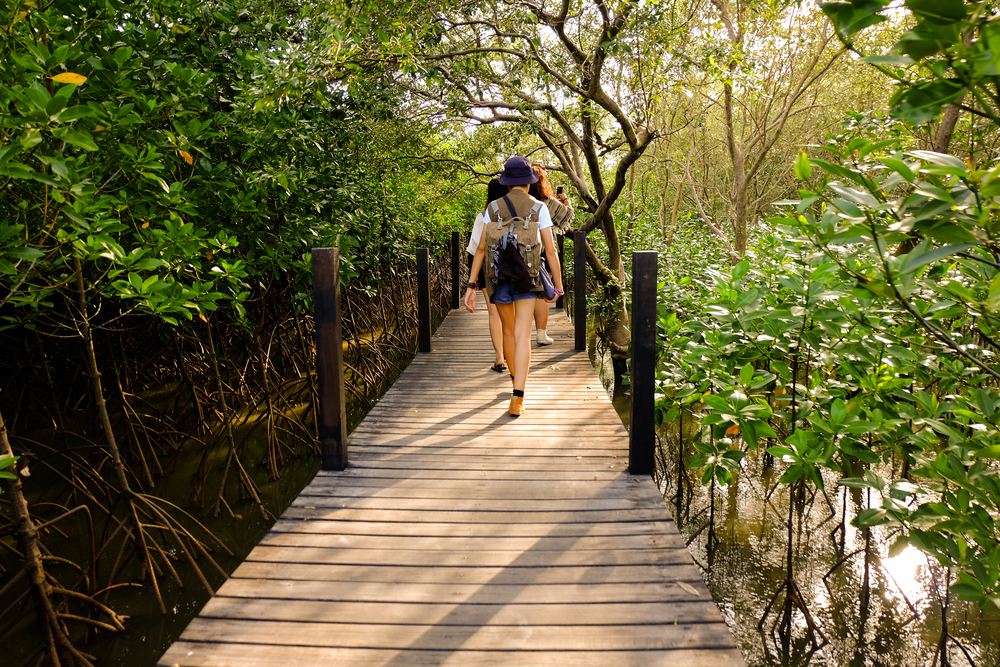Planning A Green Vacation
By Ryan Johnson
Those who care about the future of our planet strive to be environmentally conscious in our daily lives. We do our best to recycle, conserve water and electricity, choose natural and locally grown products and make good transportation choices. If we can think about our environmental impact every day, there’s no reason we can’t extend this thinking to planning a vacation. Here are some aspects of green travel to consider before your next trip.
Research
A little research goes a long way. Start by checking which cities are the most eco-friendly. In the U.S., Portland, OR, Seattle, WA, and San Francisco, CA, often rank on top due to their green policies and attitudes. Check the tourism bureau of the destination you’re interested in to find what sustainable practices they employ. For example, Marin County, just north of San Francisco, details its Certified Green lodging properties, agritourism and farm-to-table experiences on its website www.visitmarin.org.
Transportation
Public transportation is always a better choice when it comes to your carbon footprint. However, trains and buses are not always available or convenient in certain destinations. If you feel like going off the beaten path and getting a rental car is inevitable, choose the one with the best gas mileage, or better yet, go for a hybrid or an electric vehicle.
Lodging
Many hotels have adopted eco-friendly practices to keep up with demands of eco-conscious travelers. Limiting water waste, ditching disposable amenities and reducing laundry are a few ways hotels lean green. Take it a step further by staying at homier accommodations. Bear Valley Cottage (www.bearvalleycottage.com), at the heart of Marin in Olema, is a home away from home, with two bedrooms, a kitchen and a relaxing backyard.
The cottage is stocked with locally made granola, muesli, milk and cream, as well as EO soaps and bath products, which are made with natural ingredients right in Marin County. There are also bins for compost and recycling in the kitchen and a 220-volt charging station outside for guests with an electric car.
Wherever you stay, practice good habits by turning off lights, heaters and air conditioners while you’re out for the day.
Restaurants
While on vacation, seek out restaurants that source their ingredients from the nearby vicinity. Not only will this give you a true taste of the locale, your meal will be filled with the freshest ingredients that didn’t have to travel across continents on a fossil fuel-burning mode of transportation. Station House Cafe (www.stationhousecafe.com) in Point Reyes Station serves up farm-to-table cuisine, including local artisan cheeses, sustainable seafood and organic baked goods.
Activities
There’s no need to sacrifice fun if your focus is green travel. When choosing how to spend your time, try to support unique local businesses. Reach out to the tourism bureau for recommendations on sustainable establishments in the area. Consider taking a bike tour, a food tour or a farm-to-table cooking class.
In Marin, go for a tasting at Heidrun Meadery (www.heidrunmeadery.com). The sparkling honey wine at Heidrun is produced using the traditional French Champagne method. The honey is sourced from local and migratory beekeepers and ultimately has a positive impact on the environment. Each varietal captures the essence of the wildflower pollinated by the bee, resulting in one-of-a-kind flavors.
National parks
Building a vacation around a national park is one of the best ways you can ensure your trip is as green as can be—literally and figuratively. The National Park Service is a leader of conservation and park employees are eager to share sustainability practices with the public. Point Reyes National Seashore (www.ptreyes.org) park rangers drive hybrid and electric vehicles and Bear Valley Visitors Center relies on solar energy to power its operations. The park attracts 2.5 million visitors annually to its 70,000 acres of wild coastal beaches and headlands, estuaries and uplands.
In the springtime Point Reyes is very green and ideal for hiking and camping. Later in the summer, the grasses turn golden and take on a new beauty. As at any national park or wilderness area, be a good eco-tourist and “leave no trace”—don’t litter, follow the rules for making campfires and respect wild animals by keeping your distance and not feeding them.
With a little bit of forethought and common sense, you can make your next vacation a bit greener. The environment will thank you.

